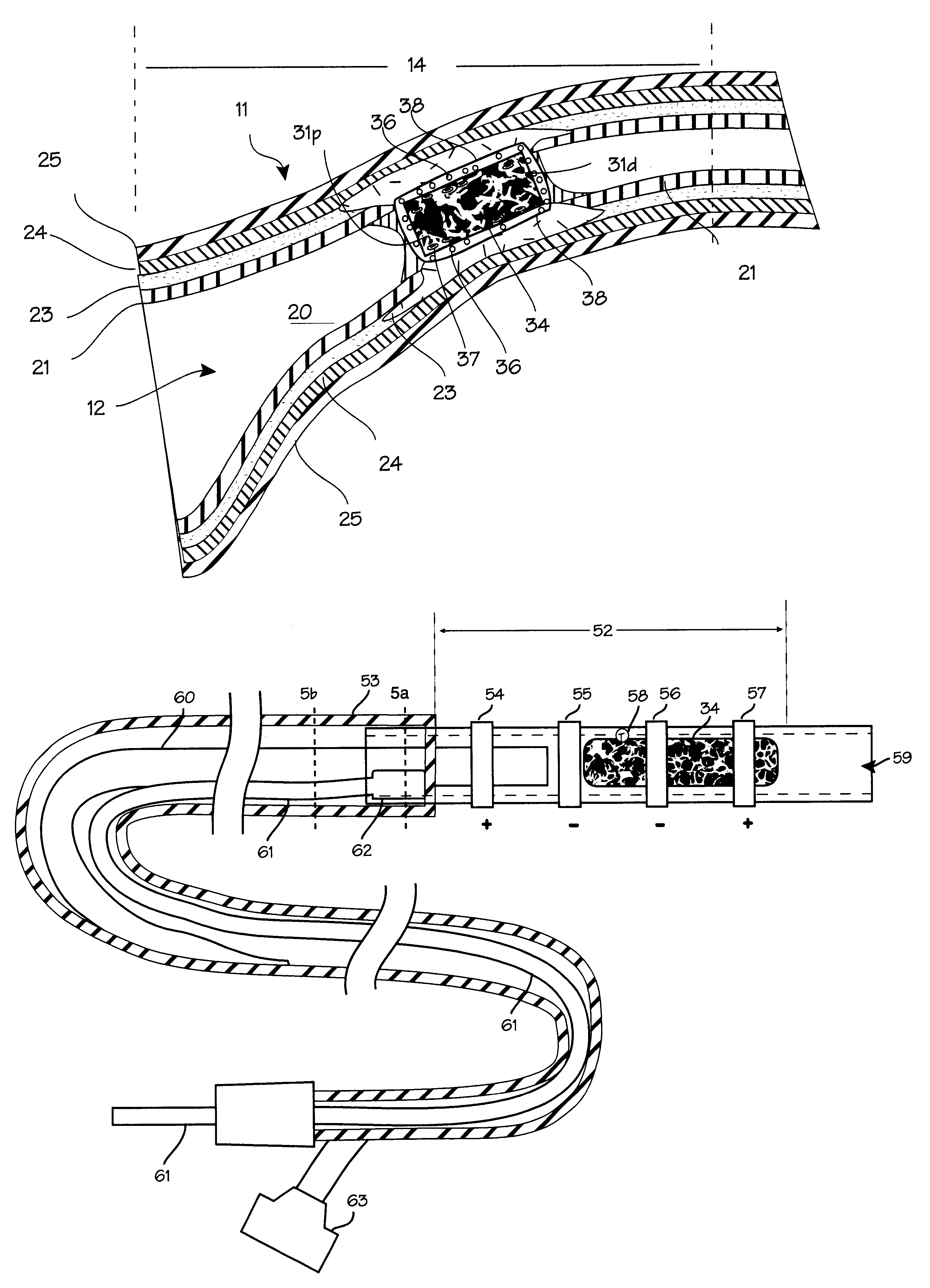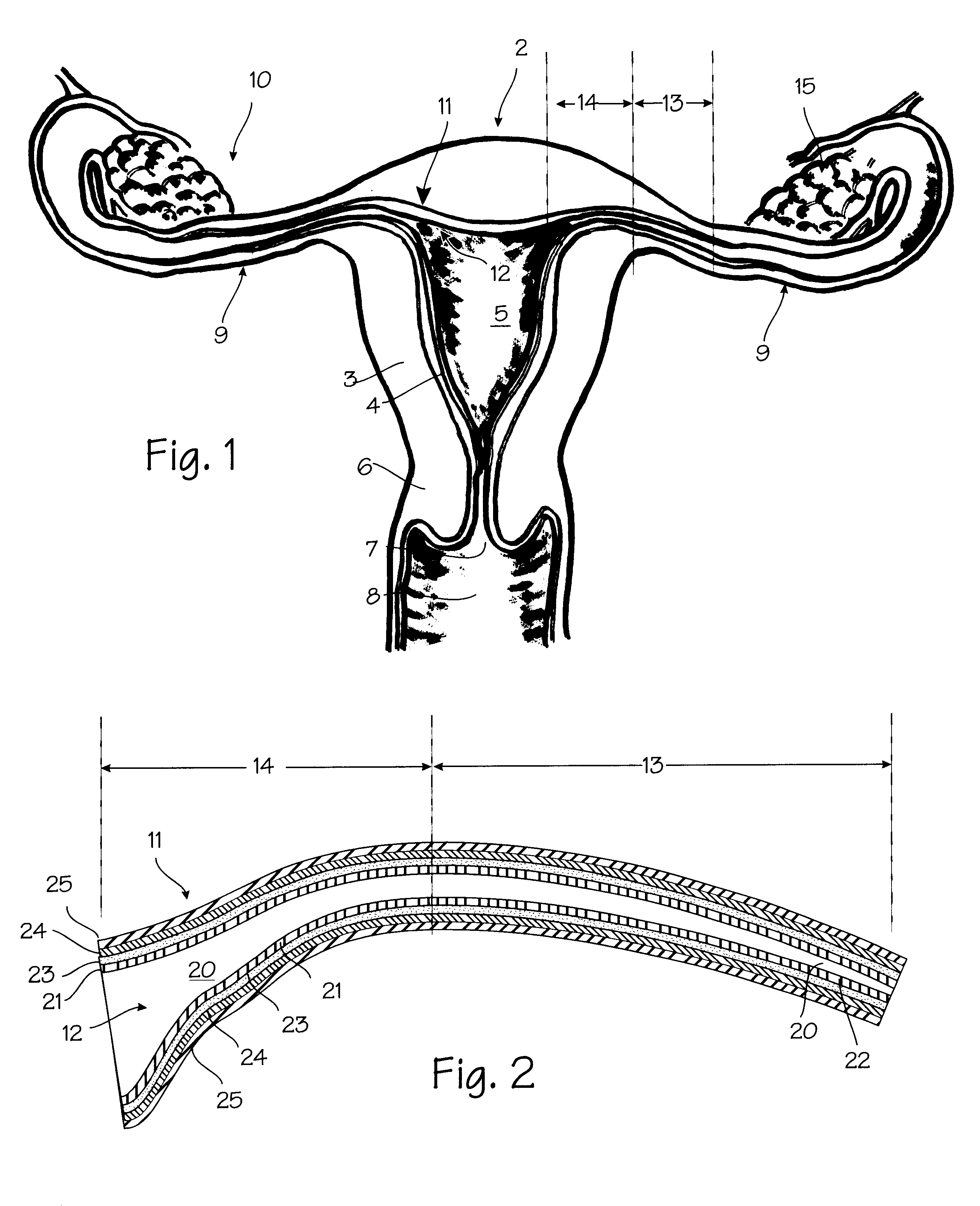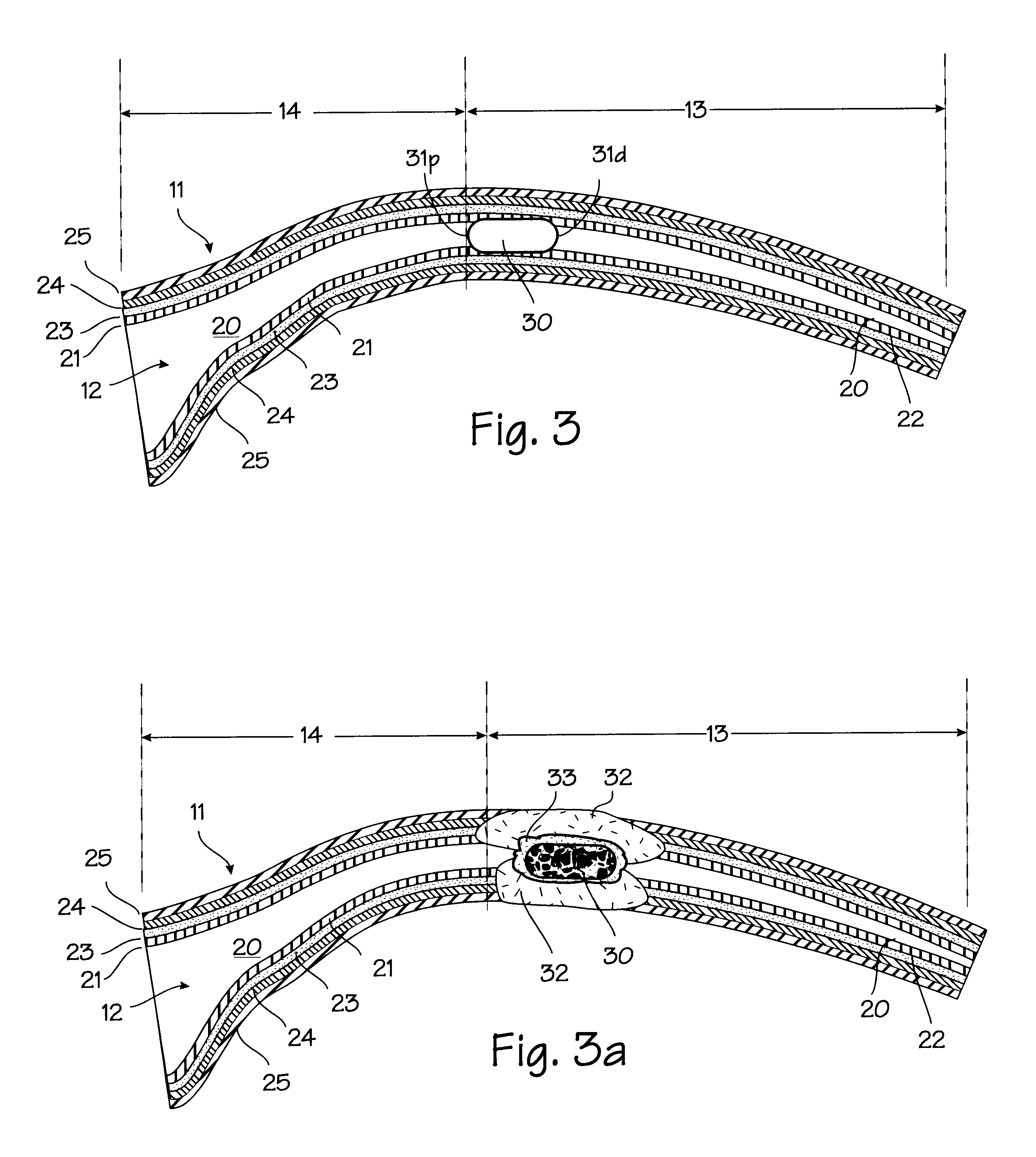Method and apparatus for tubal occlusion
a technology of tubal occlusion and apparatus, applied in the field of methods, can solve the problems of causing the plug to be expelled, the scar tissue is created, and the scarring of the fallopian tube is too large to permanently occlusion,
- Summary
- Abstract
- Description
- Claims
- Application Information
AI Technical Summary
Benefits of technology
Problems solved by technology
Method used
Image
Examples
Embodiment Construction
FIG. 1 shows some of the major elements of the female reproductive system. The uterus 2 is an organ of the female pelvis that has the shape of a pear. It consists of a thick muscular coat, the myometrium 3, a cavity having an inner mucosal lining of variable thickness called the endometrium 4, and a cavity referred to as the uterine cavity 5. The cervix 6 defines the cervical canal 7 which is an inferior opening to the vagina 8. The fallopian tube (or ampulla) 9 is a hollow organ that connects the uterus to the ovary 10. The ovary 15 is the organ that produces one or more eggs during every cycle of a woman's reproductive life. In the human female reproductive system, there is one uterus, two fallopian tubes and two ovaries (under normal conditions). The site where the fallopian tube and uterus connect is called the utero-tubal junction 11. It is a section of tubular shape of about 10 mm in length. Its inner diameter in the resting position is less than 1 mm, but when gas or liquid i...
PUM
 Login to View More
Login to View More Abstract
Description
Claims
Application Information
 Login to View More
Login to View More - R&D
- Intellectual Property
- Life Sciences
- Materials
- Tech Scout
- Unparalleled Data Quality
- Higher Quality Content
- 60% Fewer Hallucinations
Browse by: Latest US Patents, China's latest patents, Technical Efficacy Thesaurus, Application Domain, Technology Topic, Popular Technical Reports.
© 2025 PatSnap. All rights reserved.Legal|Privacy policy|Modern Slavery Act Transparency Statement|Sitemap|About US| Contact US: help@patsnap.com



